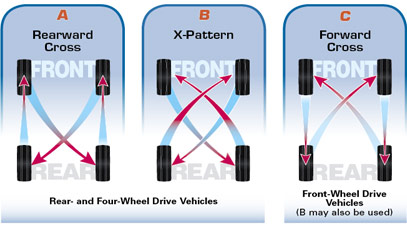On a non-directional tire, is it beneficial for the tire to be used on both sides of the car.
Because if not, I see not point in performing tire rotations other than to replace tires in sets of four instead of in sets of two.
Because if not, I see not point in performing tire rotations other than to replace tires in sets of four instead of in sets of two.

